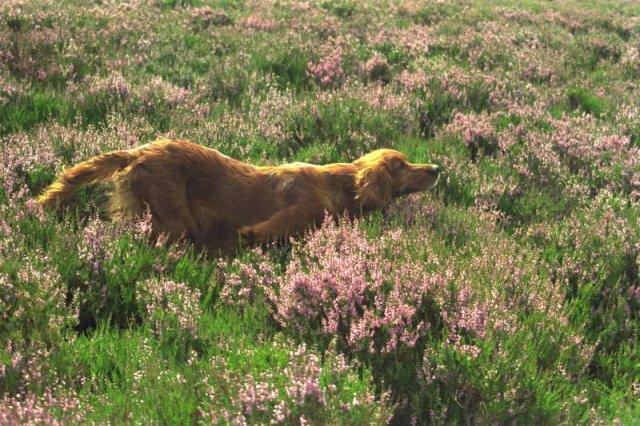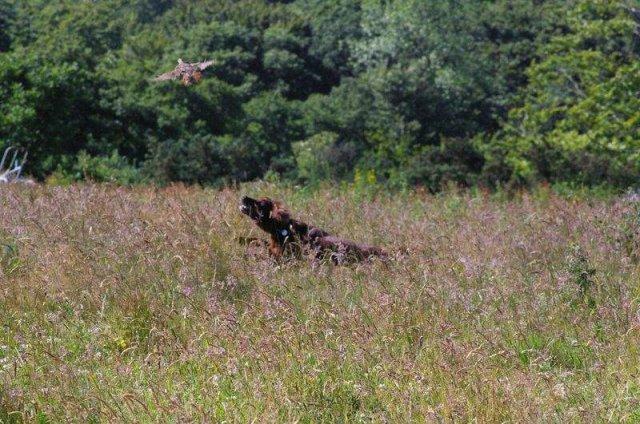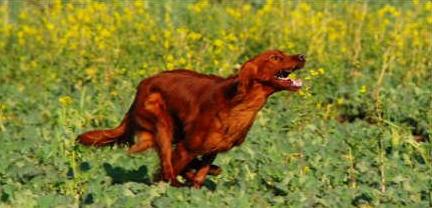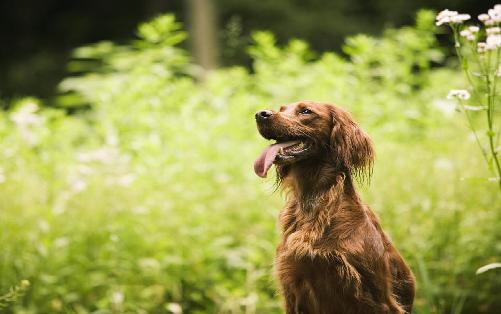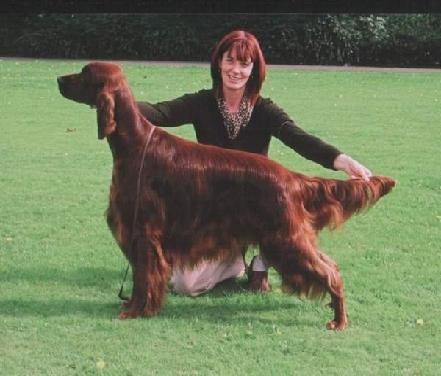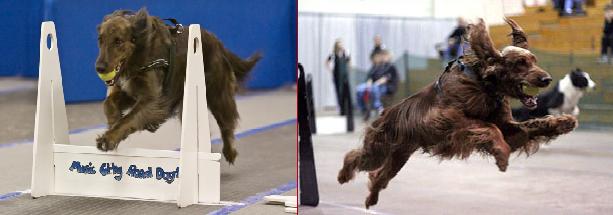The Noble Society of Celts, is an hereditary society of persons with Celtic roots and
interests, who are of noble title and gentle birth, and who
have come together in a search for, and celebration of, things Celtic.
"Fall / Autumn Edition 2010"



BOOK REVIEW
In the Ranks of Death: The Irish in the Second World War
Author: Richard Doherty
Edition: Hardcover
Pages: 304
Publisher: Pen & Sword Military
Year: 2010
This book sheds new light on this fascinating aspect of the Second World War. The book follows a chronological path, detailing Irish units and Irishmen who took part in key actions. Medal winners are well documented, as are some typically 'Irish' anecdotes – including the Protestant Northern Irish Sergeant-Major who met the Pope wearing his Orange Order sash.
Its only after reading an account like this that you realise just what a contribution the Irish, from North and South ... all volunteers ... made to the British war effort. So many Generals seem to have had Irish connections – Dill, Brooke, Alexander, Montgomery, Horrocks and O’Connor to name but a few. And then there was a plethora of other officers who distinguished themselves- Blaire ‘Paddy’ Mayne (DSO and 3 Bars, CO of the SAS and an Irish Achilles if ever there was one), Brigadier Hackett of Arnhem fame, Colonel Otway of Merville Battery, and Joe Vandeleur, CO of Irish Guards in the frantic dash up the corridor to Arnhem ... and the V.C. winners (all but one of them from 'neutral' southern Ireland). As well as the men, we are also informed about some fine units, including the Royal Irish Fusiliers, the Royal Inniskilling Fusiliers, the 8th Kings Own Royal Irish Hussars, the Royal Ulster Rifles, the Irish Guards, and more ...
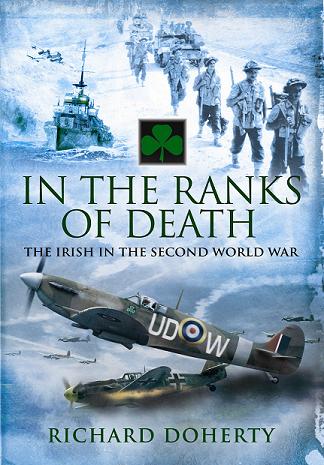
THE STATE OF KNIGHTLY ORDERS IN IRELAND TODAY
by Chevalier William F.K. Marmion, M.A.
In 1999 Irish Roots published a series of three articles on the historic knighthoods in Ireland (the Knights Templar, the Order of St. John
of Jerusalem (Knights of Malta), and the Orders of St. Thomas-of-Acre and St. Lazarus-of-Jerusalem). Those articles covered the history
of those orders up to the suppression of all of them on ‘English’ soil by circa 1550. The articles captured the names of Irishmen who were
members. But what is the situation of those orders today in Ireland?
 Ireland, a Republic, is one of the few Republics which does not have an ‘order’ which it can grant to its citizens or to foreign
Ireland, a Republic, is one of the few Republics which does not have an ‘order’ which it can grant to its citizens or to foreign
dignitaries visiting the country. There have been discussions at various times about creating an order, or ‘reactivating’ the Order of St. Patrick which existed (1783 – 1922) while Ireland was still under the British Crown. The article ‘An Honours List for Ireland’ (Irish Roots, number 4, 1996) examined the situation, but to this date nothing official has been done by the government so we continue to be without an order of merit. And there does not appear to be any current initiative to change that state of affairs.
 However, several of historic orders are alive and well in Ireland though none has any relationship to the Irish government. Despite suppression by the British Crown, the Knights of Malta continued worldwide and have had an Irish Commandery for many years – where Irish knights of the Order participate in its worldwide good works. The Knights Templar of course ceased to exist totally from 1312 in Ireland and everywhere else by Papal decree, and the small Order of St. Thomas-of-Acre never rose from its suppression by Henry VIII. The Order of St. Lazarus did continue to exist along with the Knights of Malta, and recently (September 2010) St. Patrick’s Cathedral in Dublin was the scene of a magnificent ‘investiture’ of new knights and ladies into the Order.
However, several of historic orders are alive and well in Ireland though none has any relationship to the Irish government. Despite suppression by the British Crown, the Knights of Malta continued worldwide and have had an Irish Commandery for many years – where Irish knights of the Order participate in its worldwide good works. The Knights Templar of course ceased to exist totally from 1312 in Ireland and everywhere else by Papal decree, and the small Order of St. Thomas-of-Acre never rose from its suppression by Henry VIII. The Order of St. Lazarus did continue to exist along with the Knights of Malta, and recently (September 2010) St. Patrick’s Cathedral in Dublin was the scene of a magnificent ‘investiture’ of new knights and ladies into the Order.
 It was indeed an impressive ceremony, presided over by the Grandmaster of St. Lazarus, the Spanish Marquis of Almazan, along with many prelates and representatives of the Irish Government. A number of men and women were invested into the Order, pledging their commitment to its charitable and humanitarian objectives. Additionally, several people were singled out for the award of a ‘Companionate of Merit’ of St. Lazarus, including Mary Robinson, former President of Ireland; Maura O Gara O Riordan, Registrar of Clans of Ireland; Professor Gerry McNamara of Dublin City University; and Caroline Casey, founder of the Ability Awards.
It was indeed an impressive ceremony, presided over by the Grandmaster of St. Lazarus, the Spanish Marquis of Almazan, along with many prelates and representatives of the Irish Government. A number of men and women were invested into the Order, pledging their commitment to its charitable and humanitarian objectives. Additionally, several people were singled out for the award of a ‘Companionate of Merit’ of St. Lazarus, including Mary Robinson, former President of Ireland; Maura O Gara O Riordan, Registrar of Clans of Ireland; Professor Gerry McNamara of Dublin City University; and Caroline Casey, founder of the Ability Awards.
 The Order of St. Lazarus has a Grand Priory in Ireland as well as one hereditary Commandery, and has been very active since its reestablishment in Ireland in 1962, through the efforts primarily of Lord Dunsany. So, in spite of Ireland as a nation not having a knightly order or an order of merit as do other republics, it should be noted that Irish people are still being awarded knighthoods - in St. Lazarus, as well as in the Order of Malta and in the Papal Order of the Holy Sepulchre (which also is well-organised in Ireland). Appointments in these orders of course do not carry any nobiliary connotations or stylings such as ‘sir’ or whatever on any official level as these knighthoods are not from a ‘sovereign state’ (awards of knighthoods by a sovereign state, such as the United Kingdom, may be accepted by Irish citizens but use of a prefix title can only occur with the approval of the Irish government, as has indeed happened in recent memory). In anycase, in that this investiture was by the order historically known as the ‘Beloved Order’ given its work with lepers, it is appropriate to again give a short review of the Order of St. Lazarus.
The Order of St. Lazarus has a Grand Priory in Ireland as well as one hereditary Commandery, and has been very active since its reestablishment in Ireland in 1962, through the efforts primarily of Lord Dunsany. So, in spite of Ireland as a nation not having a knightly order or an order of merit as do other republics, it should be noted that Irish people are still being awarded knighthoods - in St. Lazarus, as well as in the Order of Malta and in the Papal Order of the Holy Sepulchre (which also is well-organised in Ireland). Appointments in these orders of course do not carry any nobiliary connotations or stylings such as ‘sir’ or whatever on any official level as these knighthoods are not from a ‘sovereign state’ (awards of knighthoods by a sovereign state, such as the United Kingdom, may be accepted by Irish citizens but use of a prefix title can only occur with the approval of the Irish government, as has indeed happened in recent memory). In anycase, in that this investiture was by the order historically known as the ‘Beloved Order’ given its work with lepers, it is appropriate to again give a short review of the Order of St. Lazarus.
 The following is from the article ‘The Minor Orders of Knighthood in Ireland: St. Thomas-of-Acre and St. Lazarus-of-Jerusalem’ which appeared in number 32 (issue 4 of 1999) of Irish Roots. This reproduction is with some minor editing:
The following is from the article ‘The Minor Orders of Knighthood in Ireland: St. Thomas-of-Acre and St. Lazarus-of-Jerusalem’ which appeared in number 32 (issue 4 of 1999) of Irish Roots. This reproduction is with some minor editing:
 ‘Previous articles have covered the Crusades and Irish members of the major chivalric orders of the Templars and Knights of St. John of Jerusalem (the Knights of Malta). The most famous order of military monks/knights after the Templars and the Knights Hospitaller of St. John was unquestionably the Teutonic Knights. As an exclusively German order, it obviously never had a house or commandery in Ireland; nor did any of the four famous Spanish military orders (Alcantara, Montesa, Calatrava, and Santiago) as they remained totally on Spanish soil. However, there was a definite presence of at least one ‘minor’ order (St.Thomas-of-Acre) and possibly St.Lazarus-of-Jerusalem as well. Thus it is appropriate to mention these orders in concluding the series on knighthoods in our country during the Middle Ages.
‘Previous articles have covered the Crusades and Irish members of the major chivalric orders of the Templars and Knights of St. John of Jerusalem (the Knights of Malta). The most famous order of military monks/knights after the Templars and the Knights Hospitaller of St. John was unquestionably the Teutonic Knights. As an exclusively German order, it obviously never had a house or commandery in Ireland; nor did any of the four famous Spanish military orders (Alcantara, Montesa, Calatrava, and Santiago) as they remained totally on Spanish soil. However, there was a definite presence of at least one ‘minor’ order (St.Thomas-of-Acre) and possibly St.Lazarus-of-Jerusalem as well. Thus it is appropriate to mention these orders in concluding the series on knighthoods in our country during the Middle Ages.
St.Lazarus-of-Jerusalem
Let us now turn to the Military and Hospitaller Order of St.Lazarus-of-Jerusalem, the beloved order of knights and hospitallers
given the universal respect and admiration for their unique religious calling. It is only just possible that this small order had a
presence in Ireland, not certain or even probably (as some have said). But even given the remote possibility it is certain that
the numerous ‘lazar houses’ in Ireland derived their identifications from the Order of St. Lazarus even if (as is likely) they were
not administered or controlled by knights of the order.
 St. Lazarus as an order is older than any other, possibly back to St. Basil in the year 370. It began as a hospital for the
St. Lazarus as an order is older than any other, possibly back to St. Basil in the year 370. It began as a hospital for the
care of lepers and by the time of the First Crusade had been functioning as such outside of the walls of Jerusalem and
elsewhere in Palestine for untold numbers of years. Prior to the year 1120 and the founding of the military orders of the Templars
and Knights Hospitaller of St. John, the Order of St. Lazarus remained strictly as a hospitaller order. But leprosy was much more
widespread in those times and a number of Templars and Hospitallers of St. John contracted the dread disease. It was decided
that they would be transferred to the Order of St. Lazarus, and it was through this infusion of monk warrior-knights who were leprous that the Order of St. Lazarus itself added a military aspect to its hospitaller duties. Indeed the leprous knights of St. Lazarus, though always far smaller than the major military orders of St. John, the Templars, and the Teutonic knights, struck terrour into the hearts of the Turks – for one can imagine the charge of religious men ravaged by leprosy on the ranks of their Muslim enemies! From 1200 the knights also admitted non-leprous military monks though it appears that until the fall of Acre in 1291 the Grandmaster was always a leper. The order actually received sovereignty over a portion of the city of Acre and fought heroically at the last stand in 1291.




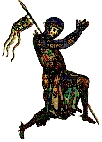

 The order was introduced into Western Europe at the end of the Second Crusade, by King Louis VII of France bringing back 12 knights of St. Lazarus and granting the order various properties. It was introduced into England at the same time, circa 1150, by Roger deMowbray, a returning knight, and the headquarters of the order would be set via various deMowbray grants, at what was soon called and to this day is called ‘Burton Lazars’ in Leicestershire. King Henry II and his son King John made further significant grants to the order, as did various others to include the Lords Marmion of Galby, very near Burton Lazars. The order was ‘beloved’ because of its hospitaller work devoted exclusively to the care of the outcasts of society: the lepers. The gospel itself took especial notice of Jesus taking pity on those afflicted with the disease and the medieval mind admired those who likewise took pity on the leprous., however much the average person kept clear of them!
The order was introduced into Western Europe at the end of the Second Crusade, by King Louis VII of France bringing back 12 knights of St. Lazarus and granting the order various properties. It was introduced into England at the same time, circa 1150, by Roger deMowbray, a returning knight, and the headquarters of the order would be set via various deMowbray grants, at what was soon called and to this day is called ‘Burton Lazars’ in Leicestershire. King Henry II and his son King John made further significant grants to the order, as did various others to include the Lords Marmion of Galby, very near Burton Lazars. The order was ‘beloved’ because of its hospitaller work devoted exclusively to the care of the outcasts of society: the lepers. The gospel itself took especial notice of Jesus taking pity on those afflicted with the disease and the medieval mind admired those who likewise took pity on the leprous., however much the average person kept clear of them!
 There were literally hundreds of ‘lazar-houses’ in Ireland, many of which were found by Gaelic kings or nobles or by Norman-Irish chiefs. There is no proof, absolutely none, of any specific foundations of or by the Order of St. Lazarus itself – though some have made ‘leaps of faith’ saying that because a king approved such and such a foundation it was therefore related to the order itself. Possibly, but not probable. The great Irish medieval historian, A. Gwyn, S.J., in his Medieval Religious Houses in Ireland, London, 1970 says absolutely that the Order of St. Lazarus did not exist in Ireland. His co-author, R.N. Hadcock, in 1964 had said in another work that it was probable that the order had at least a few houses in Ireland, but he obviously changed his mind by 1970. For the best treatment of the numerous lazar-houses and their locations in Ireland, see the comprehensive work by G.A. Lee, Lazar Hospitals in Medieval Ireland, Dublin, 1996 – where a few more possible locations of the order itself are also mentioned.
There were literally hundreds of ‘lazar-houses’ in Ireland, many of which were found by Gaelic kings or nobles or by Norman-Irish chiefs. There is no proof, absolutely none, of any specific foundations of or by the Order of St. Lazarus itself – though some have made ‘leaps of faith’ saying that because a king approved such and such a foundation it was therefore related to the order itself. Possibly, but not probable. The great Irish medieval historian, A. Gwyn, S.J., in his Medieval Religious Houses in Ireland, London, 1970 says absolutely that the Order of St. Lazarus did not exist in Ireland. His co-author, R.N. Hadcock, in 1964 had said in another work that it was probable that the order had at least a few houses in Ireland, but he obviously changed his mind by 1970. For the best treatment of the numerous lazar-houses and their locations in Ireland, see the comprehensive work by G.A. Lee, Lazar Hospitals in Medieval Ireland, Dublin, 1996 – where a few more possible locations of the order itself are also mentioned.
 The Military and Hospitaller Order of St. Lazarus-of-Jerusalem has existed as a semi-independent order right up to our present times, and continues on a worldwide basis its historic commitment to combating disease, including leprosy where it still exists. The ‘beloved’ knighthood remains small in comparison to the Knight of Malta but today is certainly present on Irish soil via the presence of a number of knights, devoted to the goals of the order. And, who knows, perhaps someday in some remote archive or library we may still find the name of a medieval Irish member of the order in Ireland.’
The Military and Hospitaller Order of St. Lazarus-of-Jerusalem has existed as a semi-independent order right up to our present times, and continues on a worldwide basis its historic commitment to combating disease, including leprosy where it still exists. The ‘beloved’ knighthood remains small in comparison to the Knight of Malta but today is certainly present on Irish soil via the presence of a number of knights, devoted to the goals of the order. And, who knows, perhaps someday in some remote archive or library we may still find the name of a medieval Irish member of the order in Ireland.’
(by Chevalier William F.K. Marmion)
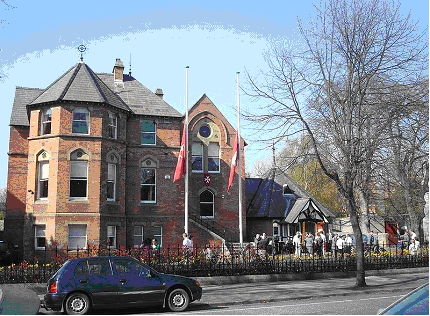
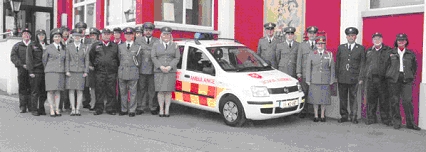
Members of the Tramore Order of Malta Unit at the official launch of the Cardiac First Responders Scheme for the Tramore area which took place in the Grand Hotel, Tramore. Also in the picture is Mr. Christy Power, Assistant Chief Ambulance Officer, HSE (3rd from right) and Commandant Winnie Maye, Director of Order of Malta, Ireland, (4th from right).
“Irish & Belgian Governments co-issued a commemorative stamp depicting two soldiers of the Irish Brigade at the Fontenoy Memorial Celtic Cross, to honour the victory of the Irish over the English at Fontenoy on the 11th of May, 1745”
The Irish Red Setter
a hardy, healthy, intelligent dog, possessed of excellent working ability and great stamina
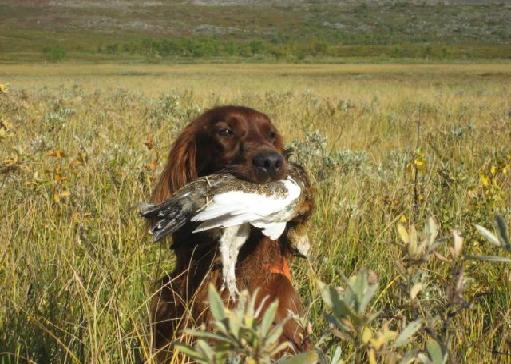


 The Irish Red Setter is an independent and sweet natured dog with a rollicking personality and makes a wonderful, loving companion. Shyness, hostility or timidness are uncharacteristic of this beautiful breed, which is best known for its outgoing, stable temperament and strong hunting instinct. The Irish Setter is a hardy, healthy, intelligent dog, possessed of excellent working ability and great stamina.
The Irish Red Setter is an independent and sweet natured dog with a rollicking personality and makes a wonderful, loving companion. Shyness, hostility or timidness are uncharacteristic of this beautiful breed, which is best known for its outgoing, stable temperament and strong hunting instinct. The Irish Setter is a hardy, healthy, intelligent dog, possessed of excellent working ability and great stamina.
 Irish Red Setters are inquisitive and great adventurers ... and so, when you are not actually in their company, they are naturally inclined to wander far and wide. For this reason you will need to pay particular attention to ensuring your fencing and gates will keep them securely confined.
Irish Red Setters are inquisitive and great adventurers ... and so, when you are not actually in their company, they are naturally inclined to wander far and wide. For this reason you will need to pay particular attention to ensuring your fencing and gates will keep them securely confined.
 As with all pedigree dogs, the Irish Red Setter was originally bred for a purpose and the purpose of the Irish Setter is to range and hunt over the moors in search of game birds.
As with all pedigree dogs, the Irish Red Setter was originally bred for a purpose and the purpose of the Irish Setter is to range and hunt over the moors in search of game birds.
 Of all the setting and pointing breeds the Irish Red Setter is renown to keep going when the rest have stopped. It is also the oldest of the Setter breeds and this is well catalogued in Irish history.
Of all the setting and pointing breeds the Irish Red Setter is renown to keep going when the rest have stopped. It is also the oldest of the Setter breeds and this is well catalogued in Irish history.
 As Irish Setters were originally bred as partridge and grouse dogs, their style of hunting these birds may be taken as the norm. In their quest there must be an intensity that gives purpose to the hunt for game. The concentration on the job at hand should be evident in every stride and movement. The co-operation with the handler is part of that concentration and should not interfere with the quest for game.
As Irish Setters were originally bred as partridge and grouse dogs, their style of hunting these birds may be taken as the norm. In their quest there must be an intensity that gives purpose to the hunt for game. The concentration on the job at hand should be evident in every stride and movement. The co-operation with the handler is part of that concentration and should not interfere with the quest for game.
 In the gallop the head is carried above the line of the back, the line of the muzzle always parallel to the ground. The gallop is fast, flowing, free of obvious effort. The line of the back remains as close to horizontal as possible, due to the harmonious interaction of front and back legs. As the body of the Irish Red Setter is close to being square, the galloping dog appears relatively high over the ground.
In the gallop the head is carried above the line of the back, the line of the muzzle always parallel to the ground. The gallop is fast, flowing, free of obvious effort. The line of the back remains as close to horizontal as possible, due to the harmonious interaction of front and back legs. As the body of the Irish Red Setter is close to being square, the galloping dog appears relatively high over the ground.

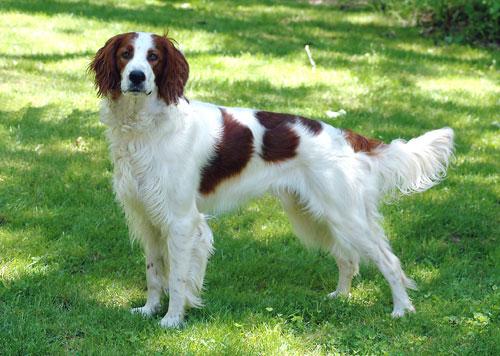
Irish Setters are fast, wide rangers


 The tail is carried in the line of the back, tending downwards. Some tail action is acceptable, but the more serious hunters use their tails little, except for balance on their turns.
The tail is carried in the line of the back, tending downwards. Some tail action is acceptable, but the more serious hunters use their tails little, except for balance on their turns.
 On finding game Irish Red Setters shorten, taking a few tight casts in the cone of the scent before drawing forward to set. From once they wind game to the set, some tail action is seen. The body lowers at the back and stays high at the shoulder and head as they sift the wind for the exact location of their birds. The ears are expressive, being well up and forward on the head as they approach game.
On finding game Irish Red Setters shorten, taking a few tight casts in the cone of the scent before drawing forward to set. From once they wind game to the set, some tail action is seen. The body lowers at the back and stays high at the shoulder and head as they sift the wind for the exact location of their birds. The ears are expressive, being well up and forward on the head as they approach game.
 Standing or crouched setting (pointing) are normal attitudes. The set is intense and rigid, full of energy and concentration, crouched in bare ground or on a surprise point and as a fixed extension of its form in drawing game where the vegetation is relatively high, the placement of the feet controlling and balancing the tense and immobile body. The head is held well up, eyes fierce, ears high, forward and expressive, the tail rigid, bristling with the passion of the find, arched under the line of the back or in its line.
Standing or crouched setting (pointing) are normal attitudes. The set is intense and rigid, full of energy and concentration, crouched in bare ground or on a surprise point and as a fixed extension of its form in drawing game where the vegetation is relatively high, the placement of the feet controlling and balancing the tense and immobile body. The head is held well up, eyes fierce, ears high, forward and expressive, the tail rigid, bristling with the passion of the find, arched under the line of the back or in its line.
 The attitude in roading must be very intense and concentrated. The head remains well up in the air to control the film of scent, muzzle parallel to the ground, the shoulder blades exposed over the line of the back and the tail carried rigidly, arched towards the earth. Any tendency towards stickiness is a grave fault. Irish Setters are fast, wide rangers. They use the ground with intelligence and precision, breaking their casts as they check the wind for the faintest taint of game. Should it be unfounded they resume their cast with urgency. The depth between the casts should be moderately open, depending on the conditions of the day.
The attitude in roading must be very intense and concentrated. The head remains well up in the air to control the film of scent, muzzle parallel to the ground, the shoulder blades exposed over the line of the back and the tail carried rigidly, arched towards the earth. Any tendency towards stickiness is a grave fault. Irish Setters are fast, wide rangers. They use the ground with intelligence and precision, breaking their casts as they check the wind for the faintest taint of game. Should it be unfounded they resume their cast with urgency. The depth between the casts should be moderately open, depending on the conditions of the day.
 Referred to as the ‘red setter’, the Irish Red Setter did not start off life as this rich red coloured dog. The exact origin of the Irish Setter is not known, although it is believed that it evolved from a combination of land spaniels. These were imported to Ireland from Spain during the 1500’s and early 1600’s when the Spanish aided the Irish in their wars and rebellions against the English. It should be noted that the colour of this breed (which was established as early as 1800) was originally a combination of red and white. Through selective breeding, the rich chestnut and mahogany red colours we know today was derived.
Referred to as the ‘red setter’, the Irish Red Setter did not start off life as this rich red coloured dog. The exact origin of the Irish Setter is not known, although it is believed that it evolved from a combination of land spaniels. These were imported to Ireland from Spain during the 1500’s and early 1600’s when the Spanish aided the Irish in their wars and rebellions against the English. It should be noted that the colour of this breed (which was established as early as 1800) was originally a combination of red and white. Through selective breeding, the rich chestnut and mahogany red colours we know today was derived.
 Irish Setters were originally used to ‘set’ game, hence the name ‘setters’. They found upland birds and crouched down close to their find so that the hunter could come and throw a net over dogs and birds. When firearms were introduced, this practice was discontinued, as the hunter wanted a dog that pointed, flushed game and hunted with an upright stance. Irish Setters made this transition with ease.
Irish Setters were originally used to ‘set’ game, hence the name ‘setters’. They found upland birds and crouched down close to their find so that the hunter could come and throw a net over dogs and birds. When firearms were introduced, this practice was discontinued, as the hunter wanted a dog that pointed, flushed game and hunted with an upright stance. Irish Setters made this transition with ease.
Irish Red and White Setter
 The Setter was meant to work in pairs to locate game on the ground and ‘point’ the game to the guns. On command he would then flush the birds into the air. If you remember this, it will help you to understand the dog’s character. Firstly, the need to run free and secondly the need to have companionship – either yours or that of another setter!
The Setter was meant to work in pairs to locate game on the ground and ‘point’ the game to the guns. On command he would then flush the birds into the air. If you remember this, it will help you to understand the dog’s character. Firstly, the need to run free and secondly the need to have companionship – either yours or that of another setter!
 Today, Irish Red Setters, with their keen nose and independent spirits, are still the choice of many sportsmen who still enjoy going afield with a good bird dog. The usual quarry of the working Irish Red Setter ‘gun dog’ in Australia is Quail and Snipe. In Ireland, England and North America the quarry is often Pheasant or Woodcock … while in Scotland our dogs often seek the famous Grouse
Today, Irish Red Setters, with their keen nose and independent spirits, are still the choice of many sportsmen who still enjoy going afield with a good bird dog. The usual quarry of the working Irish Red Setter ‘gun dog’ in Australia is Quail and Snipe. In Ireland, England and North America the quarry is often Pheasant or Woodcock … while in Scotland our dogs often seek the famous Grouse
‘Ferrari’ of the dog world
Are there ‘two types’ of dogs both called an Irish Red Setter?
 So it seems … A little over 150 years ago the Irish Setter was relatively unknown outside of Ireland. In the intervening period Irish Setters have travelled to all ends of the earth for many reasons and if the current rate of change continues, many of the dogs referred to as Irish Setters around the world will have only a passing similarity to those developed in Ireland.
So it seems … A little over 150 years ago the Irish Setter was relatively unknown outside of Ireland. In the intervening period Irish Setters have travelled to all ends of the earth for many reasons and if the current rate of change continues, many of the dogs referred to as Irish Setters around the world will have only a passing similarity to those developed in Ireland.
 A passing glance reveals the realities of the history of the breed. Public perception is that of a breed with an elegant image and following on that image, is the opinion that there is not a lot going on between the ears.
A passing glance reveals the realities of the history of the breed. Public perception is that of a breed with an elegant image and following on that image, is the opinion that there is not a lot going on between the ears.
 We have all seen the post cards – happy, sad, and angry – without any change in the vacant expression.
We have all seen the post cards – happy, sad, and angry – without any change in the vacant expression.
 When an Irishman had recently expressed the view that Irish Red Setters were intelligent and easy to train, a French journalist said to him that, to the people of France, the breed is a bit like the theatrical portrayal of an Irish peasant … kind but stupid. (How the French win friends and influence people!)
When an Irishman had recently expressed the view that Irish Red Setters were intelligent and easy to train, a French journalist said to him that, to the people of France, the breed is a bit like the theatrical portrayal of an Irish peasant … kind but stupid. (How the French win friends and influence people!)
 To some it is sufficient to explain away these stereotype ideas by believing all beautiful beings are innately stupid. (e.g. ‘the dumb blond’) I think not! There is a case to answer, but first let us see what history has shown us.
To some it is sufficient to explain away these stereotype ideas by believing all beautiful beings are innately stupid. (e.g. ‘the dumb blond’) I think not! There is a case to answer, but first let us see what history has shown us.
 The division of the breed into show and working lines is very advanced with its roots in the first third of 1900s. The comments from both sets of enthusiasts are not complimentary of each other, despite the fact that all involved are interested in the same breed. The truth is that both parties breed without sufficient consideration of the ‘big picture’. A working dog should conform to the breed standard and still be an attractive looking dog… and while a show dog should also conform to the breed standard, it should also be able to do a day’s work if required!!!
The division of the breed into show and working lines is very advanced with its roots in the first third of 1900s. The comments from both sets of enthusiasts are not complimentary of each other, despite the fact that all involved are interested in the same breed. The truth is that both parties breed without sufficient consideration of the ‘big picture’. A working dog should conform to the breed standard and still be an attractive looking dog… and while a show dog should also conform to the breed standard, it should also be able to do a day’s work if required!!!
 In the recent history of the Irish Red Setter, very few breeders/ enthusiasts were equally interested in both working and showing their dogs. This has allowed the separation of the two types.
In the recent history of the Irish Red Setter, very few breeders/ enthusiasts were equally interested in both working and showing their dogs. This has allowed the separation of the two types.
 The Irish Red Setter Club (of Ireland) believes the lack of a breed standard on height was an error, as it allowed the extent of exaggeration in size (referred to by some as the ‘American type’), that is now seen in many countries, to develop without any control.
The Irish Red Setter Club (of Ireland) believes the lack of a breed standard on height was an error, as it allowed the extent of exaggeration in size (referred to by some as the ‘American type’), that is now seen in many countries, to develop without any control.
 In the 1960’s and 1970’s the Irish Red Setter was seen much more frequently than today ... it was (and still is!) a very handsome dog, and in those days it was often featured in glamorous T.V. and print media advertising.
In the 1960’s and 1970’s the Irish Red Setter was seen much more frequently than today ... it was (and still is!) a very handsome dog, and in those days it was often featured in glamorous T.V. and print media advertising.
 Unfortunately the breed then became ‘fashionable’. The demand for these dogs grew and grew. And, the wrong sort of people were attracted to the breed because it was a ‘flash’ looking dog … and they bred them for ‘looks’ without any regard for working instinct, intelligence, or temperament.
Unfortunately the breed then became ‘fashionable’. The demand for these dogs grew and grew. And, the wrong sort of people were attracted to the breed because it was a ‘flash’ looking dog … and they bred them for ‘looks’ without any regard for working instinct, intelligence, or temperament.
 Dog judges have an enormous influence on what dogs are used to continue the bloodlines into the future. Their knowledge of the breed should be considerable and balanced. In the show ring, the work for which the breed was developed should never be far from their minds. Fashion should have no place in the judge’s deliberations. Judging standards in the show ring will have to improve.
Dog judges have an enormous influence on what dogs are used to continue the bloodlines into the future. Their knowledge of the breed should be considerable and balanced. In the show ring, the work for which the breed was developed should never be far from their minds. Fashion should have no place in the judge’s deliberations. Judging standards in the show ring will have to improve.
 In breeding Irish Red Setters there are always compromises. There are no perfect dogs, and the faults of one of a breeding pair must be matched by strengths in the other. Exaggeration should be avoided at all costs. Exaggerations in size, coat and movement are not natural to the breed. The smooth easy gait of the dogs when working in heavier conditions (rough terrain, thick vegetation, and poor weather) is greatly hindered by any of these exaggerations. Therefore, these excesses should be treated as faults.
In breeding Irish Red Setters there are always compromises. There are no perfect dogs, and the faults of one of a breeding pair must be matched by strengths in the other. Exaggeration should be avoided at all costs. Exaggerations in size, coat and movement are not natural to the breed. The smooth easy gait of the dogs when working in heavier conditions (rough terrain, thick vegetation, and poor weather) is greatly hindered by any of these exaggerations. Therefore, these excesses should be treated as faults.
 The temperament of the true Irish Red Setter is sensitive and, while they can be wilful, the closer the bond they have to their owner, the easier they are to train. Their nature is malleable, loyal and affectionate, aggression is to be avoided. The demeanour of the dog is active with expressive eyes and energetic movement.
The temperament of the true Irish Red Setter is sensitive and, while they can be wilful, the closer the bond they have to their owner, the easier they are to train. Their nature is malleable, loyal and affectionate, aggression is to be avoided. The demeanour of the dog is active with expressive eyes and energetic movement.
 Many new and inexperienced owners have not invested time in training and exercising their dogs, and later found the breed ‘too hard to handle’ ... therefore ‘stupid’.
Many new and inexperienced owners have not invested time in training and exercising their dogs, and later found the breed ‘too hard to handle’ ... therefore ‘stupid’.
 The truth of the matter is the Irish Red Setter has a high energy level and requires regular exercise and training ... the Irish Setter is a ‘Ferrari’ of the dog world and is not a dog for lazy or mediocre owners. (Lazy and mediocre owners blame the dog ... when, in fact, it is they, the owners, who are ‘stupid’.)
The truth of the matter is the Irish Red Setter has a high energy level and requires regular exercise and training ... the Irish Setter is a ‘Ferrari’ of the dog world and is not a dog for lazy or mediocre owners. (Lazy and mediocre owners blame the dog ... when, in fact, it is they, the owners, who are ‘stupid’.)
 The usual quarry of the working Irish Setter ‘gun dog’ in Australia is Quail and Snipe. In Ireland, England, and North America the quarry is often Pheasant or Woodcock … while in Scotland our dogs often seek the famous Grouse.
The usual quarry of the working Irish Setter ‘gun dog’ in Australia is Quail and Snipe. In Ireland, England, and North America the quarry is often Pheasant or Woodcock … while in Scotland our dogs often seek the famous Grouse.
 Should you decide to take an ‘Irish’ into your hearts and home ... life will never be the same again!
Should you decide to take an ‘Irish’ into your hearts and home ... life will never be the same again!
 If you make the decision to own an Irish Red Setter to share your lives, be it a handsome Irishman or a beautiful Irish coleen, these free spirits will love you unconditionally and will charm all who meet them. In return they demand constant attention and affection from you … and they need to be a large part of your lives. Once you have had an ‘Irish’ in your heart no other breed quite takes its place.
If you make the decision to own an Irish Red Setter to share your lives, be it a handsome Irishman or a beautiful Irish coleen, these free spirits will love you unconditionally and will charm all who meet them. In return they demand constant attention and affection from you … and they need to be a large part of your lives. Once you have had an ‘Irish’ in your heart no other breed quite takes its place.
Irish Show Ring Champion … the dog is also very pretty


 Do you want to get yourself a puppy bred from traditional Irish Red Setter working gundog bloodlines? (Please remember, we are not talking about the ‘show’ dogs.)
Do you want to get yourself a puppy bred from traditional Irish Red Setter working gundog bloodlines? (Please remember, we are not talking about the ‘show’ dogs.)
 These very special puppies make intelligent family pets for active outdoor people – and they’re easy to train using positive methods.
These very special puppies make intelligent family pets for active outdoor people – and they’re easy to train using positive methods.
 Litters of traditional Irish Red Setter working dogs are occasionally bred from European champions by a small international network of specialist breeders. Small numbers of such very special puppies are available … from time to time … for those enthusiasts who are discerning enough to want a magnificent ‘red’ dog that’s not only beautiful to look at and full of vitality, but smart too.
Litters of traditional Irish Red Setter working dogs are occasionally bred from European champions by a small international network of specialist breeders. Small numbers of such very special puppies are available … from time to time … for those enthusiasts who are discerning enough to want a magnificent ‘red’ dog that’s not only beautiful to look at and full of vitality, but smart too.
 The Irish Breeds Dog Club extends a warm welcome to any lover of the breed; whether you own a Setter as a ‘pet’, or your interest lies in showing or working, or if you are thinking of owning a Setter in the future ... even if you are unable to own a Setter but love the breed.
The Irish Breeds Dog Club extends a warm welcome to any lover of the breed; whether you own a Setter as a ‘pet’, or your interest lies in showing or working, or if you are thinking of owning a Setter in the future ... even if you are unable to own a Setter but love the breed.
 For further information about the Irish Red Setter, please feel free to contact Michael Doyle by post via the Irish Breeds Dog Club at P.O. Box 173, Dromana Victoria 3936, Australia … or via e-mail at mrdoyle@pac.com.au
For further information about the Irish Red Setter, please feel free to contact Michael Doyle by post via the Irish Breeds Dog Club at P.O. Box 173, Dromana Victoria 3936, Australia … or via e-mail at mrdoyle@pac.com.au

Beef in Guinness
The Guinness in this recipe has the same function as the wine in Coq Au Vin - the acid and moisture combined with the long, slow cooking help tenderise the tough but flavoursome meat.
-----------------------------------------------------------------
Two and a half pounds ( or one kilogram) of shin of beef
2 large onions
6 medium carrots
2 table spoons of seasoned flour
a little fat or beef dripping
1/2 cup dry cider
1/2 pint (or 250 mililitres) of Guinness with a cup of water
sprig of parsley
(serves four)
-----------------------------------------------------------------
Cut the beef into chunks and peel and slice the onions and carrots. Toss the beef in the flour and brown quickly in hot fat. Remove the beef and fry the onions gently until transparent. Return the beef and add the carrots and the liquid. Bring just to the boil, reduce the heat to a very gentle simmer, cover closely and cook for one and a half to two hours. Check that the dish does not dry out, adding more liquid if necessary. Sprinkle with chopped parsley and serve with plainly boiled potatoes.
SHILLIN' A DAY
by Rudyard Kipling
* a ‘shillin’ (shilling) was roughly equivalent to a 25 cent US coin
My name is O'Kelly, I've heard the Revelly
From Birr to Bareilly, from Leeds to Lahore,
Hong-Kong and Peshawur,
Lucknow and Etawah,
And fifty-five more all endin' in "pore".
Black Death and his quickness, the depth and the thickness,
Of sorrow and sickness I've known on my way,
But I'm old and I'm nervis,
I'm cast from the Service,
And all I deserve is a shillin' a day.
Shillin' a day,
Bloomin' good pay --
Lucky to touch it, a shillin' a day!
Oh, it drives me half crazy to think of the days I
Went slap for the Ghazi, my sword at my side,
When we rode Hell-for-leather
Both squadrons together,
That didn't care whether we lived or we died.
Shillin' a day,
Bloomin' good pay --
Lucky to touch it, a shillin' a day!
But it's no use despairin', my wife must go charin'
An' me commissairin' the pay-bills to better,
So if me you be'old
In the wet and the cold,
By the Grand Metropold, won't you give me a letter?
Shillin' a day,
Bloomin' good pay --
Lucky to touch it, a shillin' a day!
Give 'im a letter --
'Can't do no better,
Late Troop-Sergeant-Major an' -- runs with a letter!
Think what 'e's been,
Think what 'e's seen,
Think of his pension an' ----
GAWD SAVE THE QUEEN.
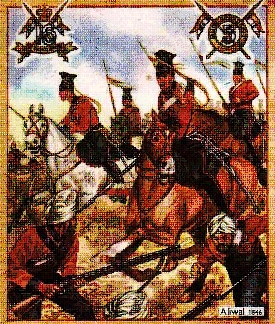


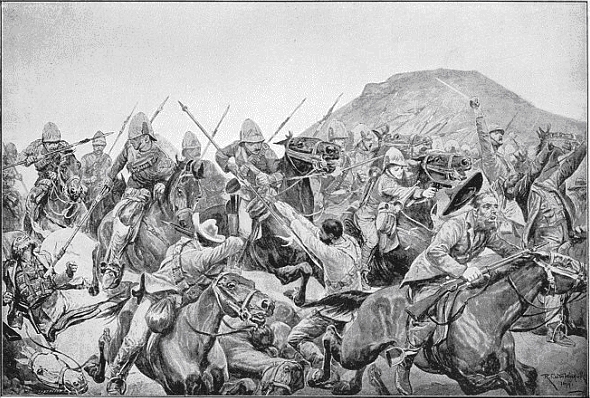

5th Royal Irish Lancers charge Boer Commandos, South Africa 1899
16th / 5th Royal Irish Lancers, India 1846
Scottish Arms Granted
to Colin Powell

 In 2004, Colin Powell, the former US Secretary of State, commemorated his Scottish roots by petitioning the Lord Lyon, Scotland’s heraldic authority, for a grant of heraldic arms in memory of his late father, Luther, who had been brought up in Jamaica. Lyon Clerk at the Court of the Lord Lyon, said: “He made the petition to remember his father. The arms can then be passed to him as his father’s heir.”
In 2004, Colin Powell, the former US Secretary of State, commemorated his Scottish roots by petitioning the Lord Lyon, Scotland’s heraldic authority, for a grant of heraldic arms in memory of his late father, Luther, who had been brought up in Jamaica. Lyon Clerk at the Court of the Lord Lyon, said: “He made the petition to remember his father. The arms can then be passed to him as his father’s heir.”
Luther Theophilus Powell was born in Jamaica in 1901 and was eligible for arms through the island’s membership of the British Commonwealth. It is understood that Colin Powell applied to the Lord Lyon in Scotland rather than to the College of Arms in London because the family of his mother, Maud Ariel McKoy, came from Scotland.
 The design of his arms, with the principal part of the shield and the crossed swords, give a flavour of Scotland with a saltire shape on a blue background, and also symbolise his military career. Also included are a lion, which is a symbol traditionally associated with the Powell surname, and an eagle, which signifies the USA and is also a reference to the badge of the 101st Airborne Division, which General Powell once commanded; the four ‘mullets [stars] Argent’ arranged around the swords refer to Colin Powell’s military rank as a four-star general. His honorary appointment as Knight Commander of the most Honourable Order of the Bath is also included.
The design of his arms, with the principal part of the shield and the crossed swords, give a flavour of Scotland with a saltire shape on a blue background, and also symbolise his military career. Also included are a lion, which is a symbol traditionally associated with the Powell surname, and an eagle, which signifies the USA and is also a reference to the badge of the 101st Airborne Division, which General Powell once commanded; the four ‘mullets [stars] Argent’ arranged around the swords refer to Colin Powell’s military rank as a four-star general. His honorary appointment as Knight Commander of the most Honourable Order of the Bath is also included.
His heraldic blazon is as follows:
Arms:
“Azure, two swords in saltire points downwards between four stars Argent, on a chief of the Second a lion passant Gules.”
Crest:
“the head of an American bald-headed eagle erased the erasure per bend sinister Proper.”
Motto:
“Devoted to Public Service.”
Colin Powell’s arms illustrated by Andrew Jamieson, Esqr

Battle Eve of the Irish Brigade
Thomas Davis
The mess-tent is full, and the glasses are set,
And the gallant Count Thomond is president yet:
The vet'ran arose, like an uplifted lance,
Crying - "Comrades, a health to the monarch of France!"
With bumpers and cheers they have done as he bade.
For King Louis is loved by the Irish Brigade.
"A health to King James," and they bent as they quaffed,
"Here's to George the Elector," and fiercely they laughed.
"Good luck to the girls we wooed long ago,
Where the Shannon, and Barrow, and Blackwater flow,"
"God propser old Ireland" - you'd think them afraid,
So pale grew the chiefs of the Irish Brigade.
"But, surely, that light cannot come from our lamp?
And that noise-are they all getting drunk in the camp?
"Hurrah! Boys, the morning of the battle is come,
And the general's beating on many a drum"
So they rush from the revel to join the parade:
For the van is the right of the Irish Brigade.
They fought as they revelled, fast, fiery, and true,
And, though victors, they left on the field not a few:
And they, who survived, fought and drank as of yore,
But the land of their heart's hope they never saw more:
For in far foreign fields, from Dunkirk to Belgrade,
Lie the soldiers and chiefs of the Irish Brigade.






